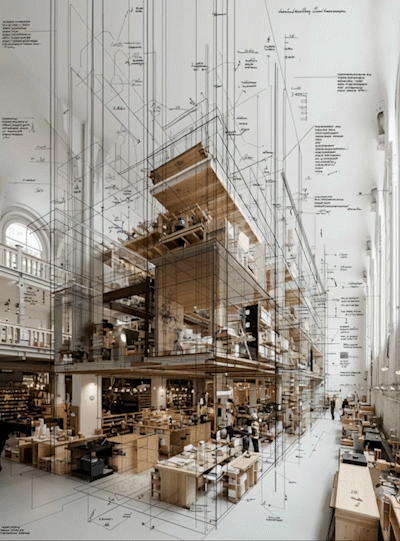Good Designers Use AI as IA: Intelligence Augmentation, Not Replacement
Is this what intelligence augmentation looks like?
AI is everywhere right now. Depending on who you listen to, it’s either the creative’s savior or the end of our jobs. But good designers know better. AI isn’t here to replace human creativity. It’s here to augment it.
The best designers already treat AI as IA: Intelligence Augmentation.
From Automation to Augmentation
Too much of today’s AI conversation is about automation:
Can AI make logos faster?
Can it generate copy, layouts, or prototypes with fewer clicks?
Can it take the place of a junior designer?
Those are interesting questions, but they’re also pretty limiting. If design were only about speed, then sure, AI could do a lot of it. But design has never just been execution. Design is about seeing clearly, exploring possibilities, and shaping experiences that matter.
That’s where augmentation comes in.
IA Has Always Been the Point
The idea of Intelligence Augmentation isn’t new. Back in the 1960s, computer scientist Douglas Engelbart—best known for inventing the mouse—talked about computers as tools to amplify human capability, not replace it. His “Mother of All Demos” in 1968 introduced not only the mouse but also hypertext, real-time collaboration, and other ideas that still shape how we work today.
Around the same time, J.C.R. Licklider at ARPA wrote about “man-computer symbiosis.” His vision was simple: let humans and machines work together, each doing what they do best.
That original vision of computing was augmentation, not replacement. We’ve drifted into talking about automation, but the real power of AI has always been in extending what people can do.
What Intelligence Augmentation Looks Like in Practice
When designers use AI well, it doesn’t erase their role. It extends it.
Expanding imagination. AI can help us explore a wider range of visual directions or copy variants than time would normally allow. Instead of replacing creative judgment, it feeds it.
Rapid prototyping. Whether in paper, Figma, or code, AI can help us try more paths quickly. That frees us to spend less time on mechanics and more time on evaluating what works for users.
Surfacing patterns. AI can turn research transcripts, analytics, or customer feedback into digestible themes. That lets us focus on insights and strategy rather than data wrangling.
Bridging silos. Designers are often translators between disciplines. AI can help create code snippets, technical summaries, or visuals for stakeholders, making communication smoother.
Personalizing at scale. Designers set the vision and guardrails. AI can adapt experiences for millions of unique users in ways no team could handle manually.
The Designer’s Role Becomes More Human
Here’s the irony. The more we use AI for augmentation, the more human the designer’s role becomes. We are:
Curators of quality. We choose what’s good, not just what’s fast.
Ethical stewards. We think about impact, fairness, and inclusivity.
Sensemakers. We frame the problem and set direction in messy, ambiguous contexts.
Storytellers. We use design to communicate meaning, not just manufacture output.
AI doesn’t diminish these roles. It makes them more important.
The Future of Design is IA-First
The strongest design teams won’t be the ones that avoid AI. They also won’t be the ones that hand everything over to it. The strongest teams will be the ones that treat AI as a creative exoskeleton.
Instead of asking, “What can AI do for us?” they’ll ask, “How can AI extend what we’re capable of as humans?”
Designers who embrace this mindset—who see AI as IA—will create better work, faster, and with more impact.
Key takeaway: Good designers don’t fear AI, and they don’t idolize it either. They use it to augment their intelligence, imagination, and humanity. And that’s exactly what Engelbart and Licklider imagined more than 50 years ago.

